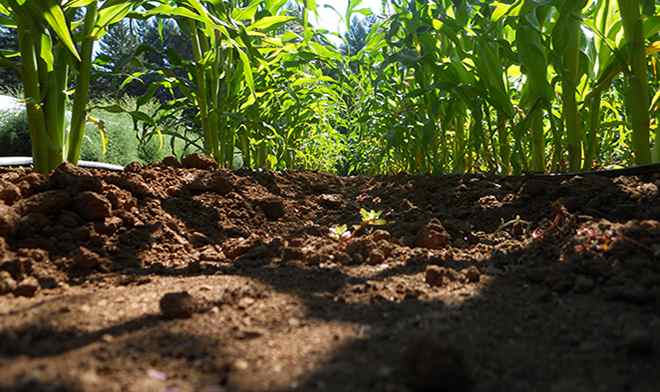
Healthy soils produce more nutrient dense food

By David Montgomery and Anne Biklé
The original proponents of organic agriculture argued that healthy soils produced healthier food, a notion supported by recent studies published in the journals PEER and Frontiers in Sustainable Food Systems that grew from our new book What Your Food Ate
Our research included reviews of prior studies
comparing organic and conventional farming, and new tests of both soil health and nutrient density on conventional and regenerative farms that revealed crops grown in healthy, fertile soils have higher levels of micronutrients and phytochemicals beneficial to human health. "Regenerative" in this context refers to the combined practices of no-till planting, cover cropping, and diverse crop rotations. We also found that pasture grazed livestock produced meat and dairy products with more phytochemicals and a healthier balance of omega-3 and omega-6 fats than found in feedlot fed animals.
Substantial declines in mineral micronutrient concentration have been reported for fruits, vegetables, grains, and meat and dairy products in the decades since the rise of today’s conventional agriculture. Our research points to degraded soil health as an important contributing factor—and one that can be improved with better farming practices to reverse such declines and further enhance the nutrient profile of foods.
Part of the ongoing controversy over nutritional differences between organic and conventional crops is due to differing definitions of what constitutes a nutrient. We found that organic crops consistently had higher levels of phytochemicals not typically considered nutrients, but that nonetheless exhibit health-protective antioxidant and anti-inflammatory properties that help prevent a range of chronic diseases.
In writing What Your Food Ate, we reviewed nearly one thousand studies to explore linkages between farming practices, soil health, crop health, animal health, and human health. In connecting the dots between agriculture and medicine, soil health emerged as an under-appreciated foundation for human health. In a nutshell, our research points to two main conventional farming practices—tillage and high rates of nitrogen fertilization—as particularly damaging to soil health as they disrupt communities of soil life involved in micronutrient acquisition and phytochemical production.
To test how regenerative farming practices affect soil health and crop nutrient density we collaborated on a study that compared soil health and nutrient density on 10 pairs of regenerative and conventional farms across the United States. On each pair of farms soil health and nutrient density were compared for fields growing the same crop variety. On average the regenerative fields had twice the topsoil organic matter and three times higher soil health scores, and produced crops with higher levels of certain vitamins, minerals, and phytochemicals.
It turns out that the pioneers of organic agriculture were right. What’s good for the land is good for us too.
Learn more about Montgomery and Biklé’s work and writing at https://www.Dig2grow.com/
